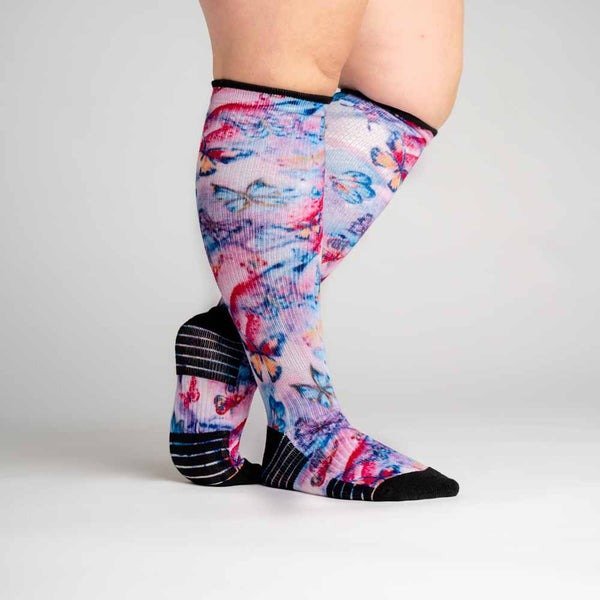Almost 90% of leg disorders arise within veins, decreasing the blood flow to the heart. To manage this problem, people need to wear socks that will improve the blood circulation in the legs. Compression socks apply pressure on the legs and promote blood flow to the heart. It reduces pain and swelling in the leg and prevents blood pooling in the veins. Diabetes damages the blood vessels in the feet, which affects blood circulation, causes swelling, and increases the risk of existing swelling. Diabetic compression socks help reduce swelling by applying slight compression, not affecting blood circulation. People living with diabetes should take care of their legs and feet by using compression socks according to the advice of their physician.
Why is compression important
The heart pumps blood, and it is circulated throughout the body and flows back to the heart. In people with diabetes, the blood vessels in the feet are damaged, and blood circulation is affected. Poor blood circulation causes problems like cold feet and varicose veins. Pressure is applied through compression, improving blood flow to the heart. Improved blood circulation relieves tiredness and awareness in the legs and prevents serious vein conditions.
People with diabetes have less feeling in their feet due to damaged blood vessels and nerves. This symptom is known as diabetic neuropathy, and people cannot feel pain or soreness caused by cuts and blisters in their feet. It can become a severe problem because cuts or wounds on the leg may turn into serious infections. Compression socks for diabetics protect the feet and help to keep them clean. They improve the blood flow in the feet and legs, which quickens the healing of cuts and sores.
The poor blood flow due to diabetes causes peripheral vascular disease, Deep Vein Thrombosis, and other diseases. Compression socks for people with diabetes increase the blood flow and prevent the occurrence or worsening of venous conditions. Some people with diabetes have swelling in their feet and legs due to decreased blood circulation, and socks help to reduce swelling and discomfort by increasing blood circulation.
How do compression socks for diabetics work
Compression socks for diabetics apply gentle pressure to legs and ankles to
Increase blood flow to the heart
Prevent downward flow of blood to the feet or lateral flow into superficial veins.
Increase the volume and velocity of blood flow.
Types of compression socks
Graduated compression socks
In this type of compression socks, the compression is strongest at the ankle and reduces upwards to the knee. It is suitable for people with peripheral edema and requires a prescription from the doctor.
Anti-embolism socks
The compression decreases from ankle upwards in these socks, but it is for people who can not move around. It reduces the chances of developing Deep Vein Thrombosis. It needs a doctor’s prescription and professional fitting.
Non-Medical support socks
It doesn’t require a doctor’s prescription, and it is bought from pharmacies. The compression level is the same throughout the socks and relieves achy and tired legs. These socks can be used by anyone and don’t require a prescription.
Benefits of wearing diabetic compression socks
Decreases swelling in legs and feet
Improves lymphatic drainage
Boosts blood circulation in the legs
Prevents pooling of blood in the veins
Prevents vein ulcers and deep vein thrombosis
Reverses venous hypertension
Reduces pain caused by varicose veins
Doctors advise people with type 1 and type 2 diabetes to use diabetic compression socks. The socks are available in various sizes and varying levels of compression. The doctor decides the size and amount of compression needed for a patient. Most people with diabetes wear compression socks from the time they wake up to the time they go to bed. The socks help people with diabetes to keep their feet clean, comfortable, and healthy.
